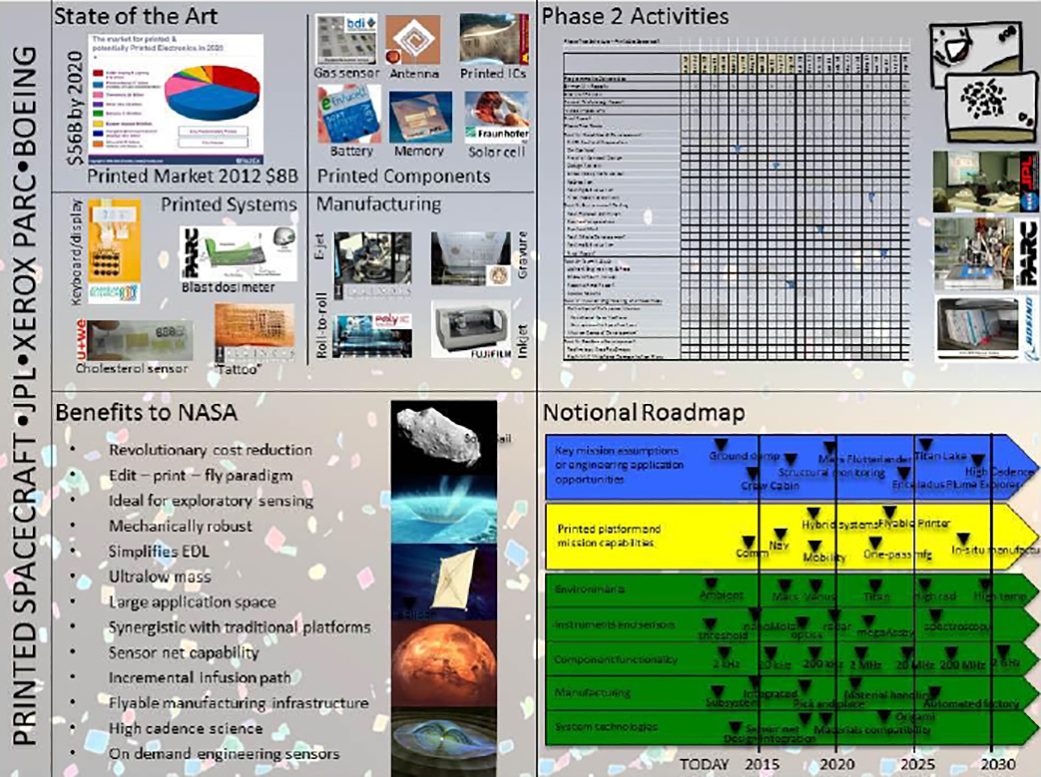Kendra Short
NASA Jet Propulsion Laboratory (with industry partners in the printed electronics field: Xerox PARC and Boeing Research and Technology)
NIAC 2012 Phase II Printable Spacecraft Final Report
Atmospheric confetti. Inchworm crawlers. Blankets of ground penetrating radar. These are some of the unique mission concepts which are enabled by a printable spacecraft.
Flexible printed electronics is a wide-ranging technology that can enhance or even enable many engineering applications. Our concept is to utilize the commercial technology of printed electronics to design and fabricate an entire end to end functional spacecraft. The novel advancement (and therefore the technical challenge) of the concept is to apply printed electronics in a multi-functional platform by implementing every subsystem that a spacecraft might need from the scientific sensor through the data downlink and have it survive and function in a space environment. These requirements push the current state of the art for functionality as well as introduce design and manufacturing compatibility challenges among the functional subsystems. Current industry growth and commercial investment is expected to advance the functionality of available basic building blocks and components synergistically with NASA’s needs.
Environmental survivability, unique sensors and mission implementation will be NASA’s challenge. In Phase 1 of our NIAC task entitled “Printable Spacecraft”, we investigated the viability of printed electronics technologies for creating multi-functional spacecraft platforms. We also explored mission concepts and architectures that may be enhanced or enabled with this technology. What we have determined is that there is a broader landscape of realistic possibilities than we had imagined.
That landscape is also striped with a multitude of paths which can take the technology in different directions to reach unique goals.
Phase 1 has provided a good framework for further investigating this application landscape and development paths within Phase 2.
The proposed Phase 2 study of the Printable Spacecraft is a direct continuation of Phase 1 comprised of five focused tasks. First, we will address technical feasibility through design and fabrication of a bench top prototype of a printed spacecraft. Second, we will perform testing on printed components to understand environmental compatibility. Third, programmatic feasibility will be established through a focused cost/benefit assessment for a single mission. Fourth, we will continue to validate the programmatic benefits of a printed spacecraft by expanding the study of a variety of mission applications. Lastly, we will define the technology development paths that can be taken including key technology milestones and follow on opportunities for demonstrations. Continuing with the JPL team from Phase 1, we have augmented it with two critical industry partners who are key players in the printed electronics field: Xerox PARC and Boeing Research and Technology.































